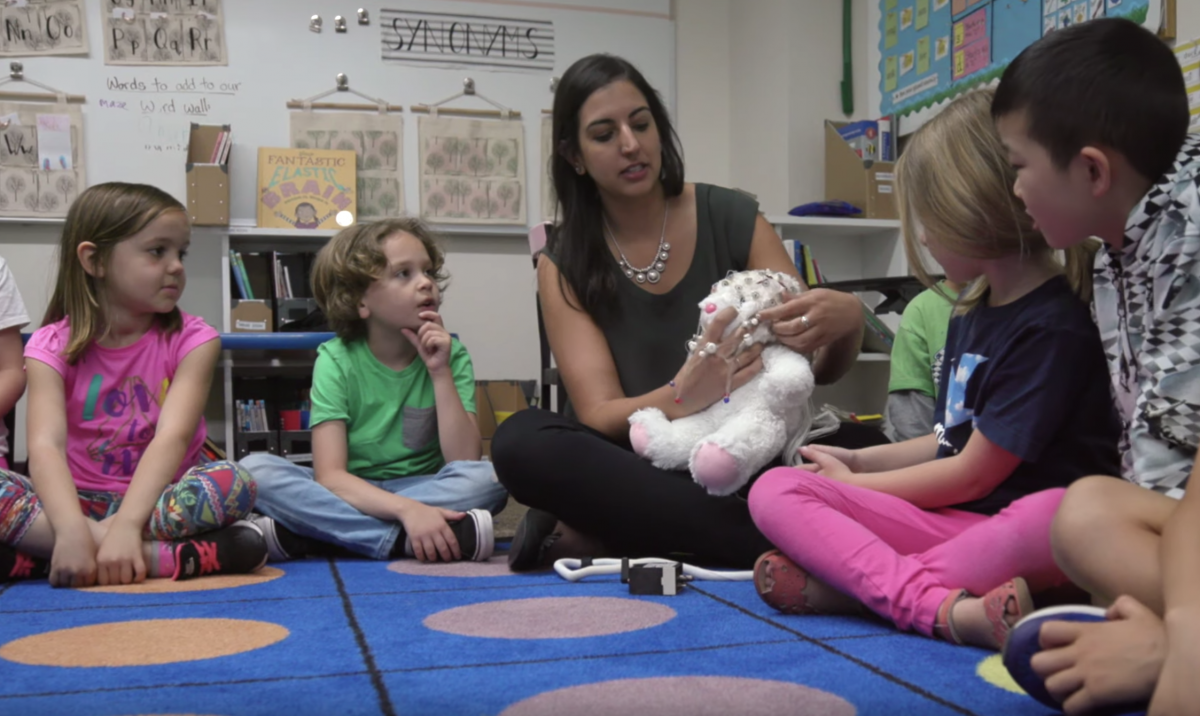
A new collaboration with an independent school in Menlo Park, Calif., is helping Stanford researchers better understand how different learning experiences drive changes in the brain.
The Brainwave Learning Center at Synapse School brings together researchers, teachers and students to gain new insights into how young learners' brains transform as they acquire new skills.
Through the center, students in kindergarten through eighth grade engage with neuroscience through lessons and activities developed by researchers and Synapse teachers, while researchers learn about brain development.
"By being embedded in a school, we can really see how school experiences impact the development of systems like the brain circuitry for reading or the brain circuitry for computing numbers," said Stanford Graduate School of Education (GSE) Professor Bruce McCandliss, who leads the project.
At the same time, Synapse students get to see scientists in action, formulating research questions using state-of-the-art equipment to try to answer them. They also find out through that observation that their brain is incredibly complex and changing all the time.
The Brainwave Learning Center is part of the broader Educational Neuroscience Initiative at the GSE that explores how changes in the brain's neurocircuitry support emerging skills that are foundational to education such as reading, math and attention. Researchers want to know how and why particular interventions benefit some learners and not others, and create new approaches that improve the educational experience for all students.
"We want to move beyond just categorizing a kid at a C, B or A level of performance and start to understand why they're struggling with some things and why they're excelling in other things," McCandliss explained. “Quantifying changes in brain signals over the course of learning, over the course of the school year, may open a new window into these questions.”
Sharing Knowledge
A cornerstone of the Brainwave Learning Center is its integration within the school, and its teachers, students and parent community.
"One of the things that's really important, especially when you're working with younger children, is to have them be comfortable with the research environment," said Elizabeth Toomarian, the director of the Brainwave Learning Center and researcher at Stanford.
She said when you bring a child into a traditional university-based research lab, it can feel a little overwhelming. By introducing them to the concepts in their own classroom with familiar items, they become excited about the projects and come to see the research and outreach as a part of their school experience.
"One thing we really like to do at the beginning is show them how to help a stuffed animal wear an EEG cap. From there we like to show them how it goes over their own head, and what their brain waves look like when they do different things, like close their eyes and take deep breaths. They learn that it doesn't hurt, and it's not introducing any kind of current," said Toomarian, who holds a doctorate in educational psychology. "We're just passively measuring brain waves – the brain’s natural energy – the same way as when a doctor listens to your heartbeat."
The Brainwave Learning Center is also focused on outreach and teaching. Students have an opportunity to enroll in a course to explore neuroscience with GSE researchers. Researchers also partner with various teachers to integrate neuroscience lessons into their classes.
"We know through empirical evidence what happens when you teach the right way," said Jim Eagen, head of school at Synapse. "However, there's a great deal of data and research that universities can provide to our teachers and our students that can make this flourish."
Eagen added that, “As a school we feel very confident when working with Stanford that all the procedures are approved, the data is protected and private, and all the information is used only for research and school improvement.”
"Our students love this concept, love the idea of looking into their own brain and the patterns of learning," he said.
Educating for the future
The partnership includes a learning component for Stanford doctoral students, as well. Typically, it's difficult to combine education and neuroscience. "They're quite different fields," explained McCandliss.
The initiative gives doctoral students the opportunity to help devise questions that will advance the research field while producing meaningful findings for the school.
"Connecting with young kids about how fascinating their brains are has been a source of energy for our students," McCandliss said. "This feels quite different from other university-based research labs that I've been involved in."
The Synapse integration revealed a new model for both the research and the partnership.
"We formed a partnership between a local school, a graduate school of education and a neuroscience laboratory. This has been kind of remarkable," McCandliss said. "It's allowing us to ask questions that we really couldn't answer in other ways.”
Subscribe to our monthly newsletter.